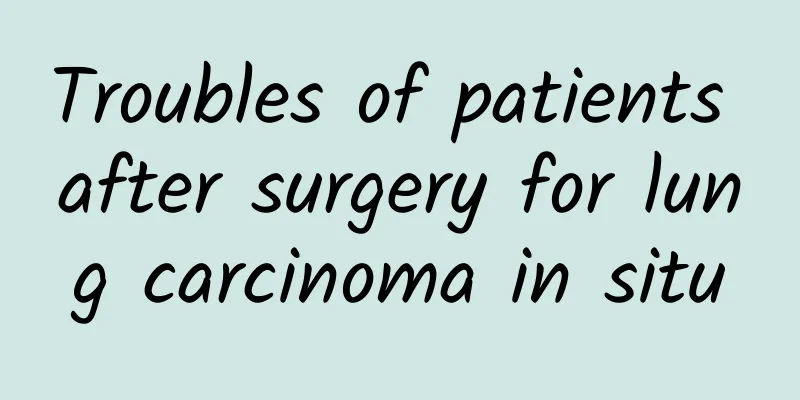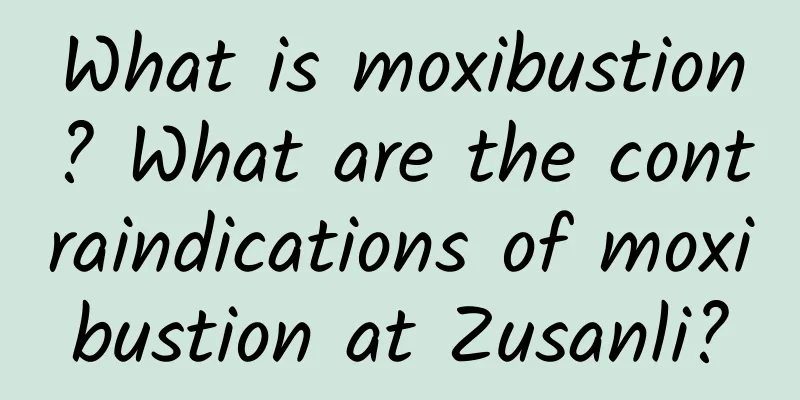Troubles of patients after surgery for lung carcinoma in situ

|
This is the 3907th article of Da Yi Xiao Hu Lung cancer, also known as "the world's number one cancer killer," poses a serious threat to human health. The treatment of lung cancer advocates "early detection, early detection, and early treatment." Modern medicine has surgical treatment, chemotherapy, radiotherapy, immunotherapy, molecular targeted therapy, and traditional Chinese medicine treatment for lung cancer. With the popularization of modern health examination screening and the widespread application of technologies such as high-resolution CT, more and more patients are choosing surgical resection or ablation for lung cancer in the early stages. However, with the aging of the population, more and more early lung cancer patients are over 75 years old, and these patients often cannot choose surgical treatment. In addition, how long is the interval between each follow-up? When will the follow-up end? Every review may cause psychological panic for the examinee, and also increase the examinee's exposure to X-rays. Some patients' pathology reports show "carcinoma in situ", and subsequent follow-up found new nodules. They are anxious and worried all day long, which seriously affects the examinee's quality of life. Patients' anxiety is roughly concentrated on the following issues: 1. What is carcinoma in situ? Will it recur or metastasize? Carcinoma in situ refers to cancer cells that are confined to the epithelial cell layer of the bronchial mucosa and have not penetrated the basement membrane, nor have they infiltrated into the deep layers of the basement membrane. Therefore, the stage of carcinoma in situ of the lung belongs to the very early stage of lung cancer. Since the basement membrane remains intact, carcinoma in situ will not metastasize, and will not recur after resection. Carcinoma in situ of the lung is classified as stage 0 cancer. The main treatment method is surgical treatment such as partial lobectomy or ablation. After the tumor and the surrounding normal lung tissue are completely removed through surgery, the patient can often obtain a cure for 5-20 years, or even lifelong. If active and effective treatment is not given at the stage of carcinoma in situ of the lung, and there is no regular follow-up, the cancer cells may penetrate the basement membrane and infiltrate into the deep layers of the basement membrane. At this time, the cancer cells will have the opportunity to metastasize. 2. What should I do if new nodules grow after surgery for carcinoma in situ? Follow-up is usually required after surgery for carcinoma in situ. The first three years after treatment are the peak period for lung cancer recurrence and metastasis. Therefore, it is basically followed that in the first three years after treatment, an assessment is performed every 3 to 6 months, between 4 to 5 years, an assessment is performed every 6 months, and after 5 years, an assessment is performed once a year, with follow-up chest CT, tumor markers and other examinations. However, some patients have found new ground-glass nodules through postoperative follow-up. Not all ground-glass nodules that recur after surgery require surgical treatment. At this time, patients should go to the hospital as soon as possible. The doctor will judge the possibility of malignancy based on the location, shape, and size of the ground-glass nodules and clarify the treatment plan. For patients who only need follow-up and do not need surgical resection for the time being, traditional Chinese medicine can be selected for conditioning. 3. Is there any relationship between the occurrence of lung carcinoma in situ and TCM constitution? The theory of TCM constitution is a new discipline that studies the physical characteristics, physiology, and pathological features of the human body under the guidance of TCM theory, and analyzes the disease reaction state, pathological nature, and development trend. We divide the population into nine basic types: peaceful constitution, qi deficiency constitution, yang deficiency constitution, yin deficiency constitution, phlegm-damp constitution, damp-heat constitution, qi stagnation constitution, blood stasis constitution, and special constitution. We clinically found that qi deficiency constitution, qi stagnation constitution, damp-heat constitution, phlegm-damp constitution, and blood stasis constitution are closely related to the occurrence of lung carcinoma in situ. Although the lung carcinoma in situ was removed surgically, patients with these constitution types still have imbalances in yin and yang, qi and blood, leading to pathological mechanisms such as phlegm and blood stasis, qi stagnation and blood stasis, liver qi stagnation, and qi and yin deficiency, and form tangible nodules again. We can use TCM to intervene in constitution, pathological factors, pathogenesis, and other aspects to enable the human body to achieve a state of relative balance of yin and yang, qi, and blood, and reduce the possibility of lung cancer growing again. 4. How does traditional Chinese medicine view the fatigue symptoms that occur after surgery for lung carcinoma in situ? We found that patients who have undergone surgery for lung carcinoma in situ generally experience symptoms such as decreased physical strength, coughing, expectoration, decreased appetite, and fatigue. Western medicine does not have a particularly good solution for this. At this time, traditional Chinese medicine can play its unique advantages in postoperative conditioning for lung carcinoma in situ. Traditional Chinese medicine believes that "the lung is a delicate organ". The lung controls qi and controls breathing. After partial lobectomy or ablation, the lung qi of patients is damaged. Lung qi deficiency can cause spontaneous sweating, lack of breath, weak cough and wheezing, as well as thin sputum, wheezing, mental fatigue, pale complexion, low voice, easy cold, fear of wind, fear of cold, easy fatigue, and decreased physical strength. Traditional Chinese medicine believes that the lung belongs to "gold" in the five elements and has a close relationship with the spleen, kidney, and liver. "The spleen is the mother of the lung, and the kidney is the child of the lung." When the lung is damaged, traditional Chinese medicine often chooses to cultivate soil to produce gold and nourish the lung and spleen at the same time, and gold and water to produce the lung and kidney at the same time for treatment. Commonly used medicines for tonifying the lung and spleen include ginseng, astragalus, white atractylodes, poria, cordyceps, etc., and Chinese patent medicines include Yupingfeng powder, Shenling Baizhu powder, etc. Chinese medicines for tonifying the lung and kidney include Ophiopogon japonicus, Schisandra chinensis, Polygonatum sibiricum, Chinese yam, Ligustrum lucidum, Lycium barbarum, etc., and Chinese patent medicines include Maiwei Dihuang pills, Heche Dazao pills, etc. Some postoperative patients have liver qi stagnation, excessive liver fire, wood fire injuring metal, and consuming and burning yin, and have dry cough, bitter mouth, dry mouth, red eyes, etc. The symptoms increase and decrease with emotional fluctuations. We adopt the method of assisting gold to calm wood and calm the liver and clear the lungs, and use Morus alba bark, Rehmannia root bark, Scutellaria baicalensis, Bupleurum, Gardenia jasminoides, Platycodon grandiflorum, Apricot kernel, etc., and add or subtract according to symptoms. 5. In addition to taking Chinese medicine internally, what other treatment methods does traditional Chinese medicine have for postoperative conditioning of lung carcinoma in situ? TCM's postoperative conditioning for lung cancer is not limited to oral Chinese medicine. We also have external treatments and traditional exercises for intervention. TCM's external treatments include acupuncture, acupoint application, ear acupuncture and other treatments. For example, you can regularly massage and acupuncture the Zusanli acupoint. TCM has a saying that "regularly pressing Zusanli is better than eating old hens." Acupoint application and acupuncture treatment can improve the patient's immunity and prevent tumor recurrence. TCM exercises such as Ba Duan Jin, Tai Chi, Liu Zi Jue, etc. can improve the patient's lung function, which is of great benefit to the recovery of lung function in patients after lung cancer surgery. Persistent exercise can improve the patient's cardiopulmonary capacity, optimize exercise ability, and improve the quality of life. Longhua Hospital's "Shao's Lung Protection Exercise" is very suitable for patients who have undergone surgery for lung cancer in situ. 6. What is the mechanism of action of traditional Chinese medicine in preventing and treating postoperative lung carcinoma in situ? Traditional Chinese medicine believes that lung malignant tumors belong to "lung accumulation". Traditional Chinese medicine has the saying that "strong people have no accumulation, but weak people have it". We believe that the fundamental cause of lung cancer is the deficiency of the body's positive energy, which produces pathological products such as phlegm, blood stasis, and endotoxins. Therefore, postoperative conditioning for lung cancer in situ is also mostly based on strengthening the body and eliminating evil. When strengthening the body, drugs such as Codonopsis, Astragalus, Ginseng, Atractylodes, and Polygonatum are generally selected to enhance the body's immunity and reduce the possibility of recurrence. For eliminating evil, commonly used Chinese medicines such as Scutellaria barbata, August Fragrance, and Hedyotis diffusa have the effect of clearing heat and detoxifying, and pharmacological experiments have also confirmed that they have anti-tumor effects. Strengthening the body and eliminating evil play a huge role in preventing tumor recurrence and metastasis. Secondly, if new nodules appear in the patient's postoperative follow-up, there is no indication for surgery for the time being, or the patient is too old, has cardiopulmonary insufficiency, or is worried and unwilling to undergo surgery, Chinese medicine can also be used to participate in the postoperative conditioning of patients with lung cancer in situ, which fully reflects the prevention and treatment concept of traditional Chinese medicine to prevent before illness, prevent changes after illness, and prevent recurrence after recovery. Zhu Danxi, a famous medical scientist in the Yuan Dynasty, said: "Many diseases in the human body occur due to depression." Today, when we are afraid of "cancer", we should establish a healthy concept and an optimistic attitude. At the same time, we should have regular physical examinations. If suspicious nodules are found, we should go to the hospital immediately to clarify the nature of the nodules as soon as possible and intervene early. Regular follow-up of patients after surgery for lung carcinoma in situ is very important. It is recommended to regularly review tumor markers and chest CT to prevent tumor recurrence and metastasis. Postoperative conditioning of lung carcinoma in situ by traditional Chinese medicine can also prevent tumor recurrence and metastasis. It is recommended that patients after surgery for lung carcinoma in situ, under the guidance of professional physicians, self-manage and regularly review, can effectively monitor the condition, and improve health and well-being through intervention with the characteristics of traditional Chinese medicine. About the Author: Fang Hong, Director, Professor. Chief Physician of the Department of Preventive Health Care of Traditional Chinese Medicine, Longhua Hospital, Master Supervisor, and Famous Traditional Chinese Medicine Doctor of Longhua Hospital. He is the Vice President of the Fever Disease Branch of the Chinese Society of Ethnic Medicine; Member of the Chinese Traditional and Western Medicine Respiratory Disease Professional Committee; Director of the World Federation of Chinese Medicine Respiratory Disease Professional Committee; Director of the World Federation of Chinese Medicine Preventive Disease Professional Committee; Vice Chairman of the Preventive Disease Branch of the Shanghai Association of Traditional Chinese Medicine. He has been committed to the treatment of chronic respiratory diseases with traditional Chinese medicine for a long time, such as lung nodules, postoperative carcinoma in situ, bronchial asthma, bronchiectasis, chronic obstructive pulmonary disease, repeated colds, sub-health conditioning, etc. Expert clinic hours: Friday morning. Special clinic hours: Wednesday afternoon and Saturday morning. Paste prescription clinic hours: Tuesday morning. Li Tinghao, Master of Traditional Chinese Medicine Internal Medicine, focuses on the treatment of respiratory diseases with traditional Chinese medicine. Author: Department of Traditional Chinese Medicine Preventive Health Care, Longhua Hospital Director Fang Hong Li Tinghao Master's degree student |
<<: This digestive tract disease is a bit strange - Alagille syndrome
Recommend
What causes enlarged ovaries?
The health of the ovaries has a great impact on w...
What disease is the leucorrhea like tofu residue?
Abnormal leucorrhea is a common disease among wom...
Uneven echo on ultrasound after miscarriage
Female friends should actively do a follow-up vis...
Can pink acacia flowers be eaten? How to preserve acacia flowers for a long time
Sophora flowers can be used as ornamental plants ...
How to take the "special medicine" when you are infected with influenza B? 10 questions and 10 answers from pharmaceutical experts
Recently, influenza (hereinafter referred to as f...
[Technology benefits the people] Our hospital's ophthalmology department independently carried out the first highly difficult level 4 surgery - vitrectomy, and the patient regained clear vision
Recently, the Department of Ophthalmology of our ...
What is the TCM treatment for ovarian cysts?
Many patients with ovarian cysts feel conflicted ...
What does it mean for different people to dream about mooncakes? How many calories are in a mooncake?
I don't know if you have noticed that now we ...
Can I still use test strips for threatened abortion?
For situations such as threatened miscarriage. Fr...
How to regulate menopause in women
Nowadays, people feel very troubled whenever they...
What are the effects of drinking tea water on the fetus when pregnant?
Pregnant women can drink tea, but they should pay...
What is Chinese independent reading ability? How to answer extracurricular reading comprehension questions well?
Primary school students are in a critical stage o...
Can pregnant women wear mascara?
When it comes to becoming beautiful, I believe it...
What should you pay attention to when getting pregnant again after miscarriage
I believe everyone is familiar with the symptoms ...









